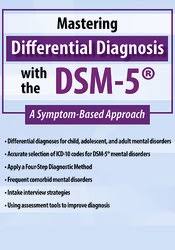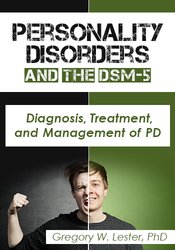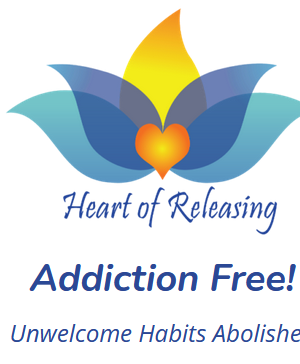Margaret L. Bloom – Mastering Differential Diagnosis with the DSM-5, A Symptom-Based Approach
$200.00 Original price was: $200.00.$75.05Current price is: $75.05.
Available for Pre-Order. This product will be available within a few days.
Margaret L. Bloom – Mastering Differential Diagnosis with the DSM-5, A Symptom-Based Approach
Take your DSM-5® diagnostic skills to the next level! This advanced recording is designed specifically for mental health professionals seeking to master clinical diagnosis and differential diagnosis using the DSM-5®, ICD-10 and online assessment tools. The focus of this workshop is on the key symptoms for each diagnosis, common differential diagnoses and frequent comorbid disorders of anxiety, depressive, trauma-related, substance-related, psychotic and neurodevelopmental disorders. Case examples and studies are provided throughout – giving you the opportunity to learn and apply a four-step symptoms-based diagnostic method. Topics include the clinical intake interview, differential diagnoses, online assessment tools to narrow diagnosis and potential comorbidities.
- Apply a four-step diagnostic process to accurately identify and code a client’s diagnosis.
- Specify key symptoms and diagnostic criteria for frequently diagnosed mental disorders.
- Determine important differential diagnoses for anxiety, depressive, trauma-related, substance-related, and neurodevelopmental disorders.
- Analyze differential diagnoses for children who present with disruptive behavior.
- Differentiate between overlapping symptoms and comorbid conditions in order to provide the correct diagnosis.
- Utilize the DSM-5® severity tables, assessment tools, and coding notes to improve the accuracy of diagnosis and ICD-10 coding.
Would you like to receive Margaret L. Bloom – Mastering Differential Diagnosis with the DSM-5, A Symptom-Based Approach ?
Quick Review of Using the DSM-5 and ICD-10
- Diagnosis of mental disorders in the U.S.A.
- Use of two models DSM-5 and ICD-10
- Use of Specifiers
- DSM-5 and ICD Coding and Recording
- Web-based DSM-5 Resources
- Digital Updates
- DSM-5 Cross-Cutting Symptom Measures and Screening Tools
Four Step Diagnostic Method
- Case 1: Michelle
- Goals of the Clinical Interview
- Steps to a DSM-5 Diagnosis
- Step 1: Gathering Client Information and Behavior Sample
- Interview Phases I, II, and III
- Using Client Observation Sheet in Step 1
- Using assessment tools to supplement data
- Sources of Error to avoid in the clinical interview
- Step 2: Identifying Key DSM-5 Symptom Clusters
- Step 3: Differential Diagnosis List
- Considering medical and substance causes of symptoms
- Assessments for Alcohol, Drug and Tobacco use
- Differential Diagnosis Guides in DSM-5 Manual
- Step 4: Initial DSM-5 Diagnosis
- Comorbidity considerations
Differential Diagnosis of Specific DSM-5 Mental Disorders
Clients with Symptoms of Depression
- Key symptoms of Depression and Dysphoria
- Substance-Related and Medical conditions with Depressive Symptoms
- Mental Disorders with Symptoms of Depression
- Diagnosis Challenge: Case 2: Marilyn Wilson
- Differentiating Disorders with Symptoms of Depression
- Frequent Comorbid Disorders
Clients with Fear and Anxiety
- Key Symptom Patterns of Anxiety
- Substance-Related and Medical conditions with Anxiety Symptoms
- Mental Disorders with Symptoms of Anxiety
- Differentiating by Patterns of Anxiety symptoms
- Diagnosis Challenge: Case 3: Hunter
- Specific Differential Diagnoses
- Generalized Anxiety Disorder
- Panic Disorder
- Frequent Comorbid Disorders
Clients with Abnormal or Impaired Cognition
- Diagnostic Challenge: Case 4: Christa
- Sorting Patterns of Psychosis
- Substance-Related and Medical conditions with Psychosis symptoms
- DSM-5 mental disorders with psychosis symptoms
- Sorting Patterns of Cognitive Deficit: Case 5: Bob Gray
- Substance-Related and Medical conditions that produce cognitive deficits
- Differential Diagnosis when Cognitive Deficits as a Key Symptom
- Neurodevelopmental Disorders
- Neurocognitive Disorders
Clients with Repetitive Thoughts and Behaviors
- Diagnostic Challenge: Case 6: Devin
- Mental Disorders with Symptoms of Repetitive Thoughts and Behaviors
- Substance-Related and Medical conditions associated with Repetitive Thoughts and Behaviors
- Frequent Comorbid Disorders
Clients with Disruptive Behaviors
- Disruptive Behavior Symptoms
- Diagnostic Challenge: Case 7: Natalia is a Problem
- Substance-Related and Medical conditions associated with Disruptive Behaviors
- Differential Diagnosis by Patterns of Disruptive Behavior
- Defiant, Angry and Vindictive
- Impulsive and/or Antisocial
- Comorbidity in DSM-5 Disruptive, Impulse Control, and Conduct Disorders
Be the first to review “Margaret L. Bloom – Mastering Differential Diagnosis with the DSM-5, A Symptom-Based Approach” Cancel reply
Related products
Health & Medical
Health & Medical
Health & Medical
Gregory W. Lester – Personality Disorders and the DSM-5 – Diagnosis, Treatment, and Management of PD
Health & Medical
Kate Freeman – Heart Of Releasing – Healthy Body, Beautiful Being
Health & Medical
Health & Medical













Reviews
There are no reviews yet.